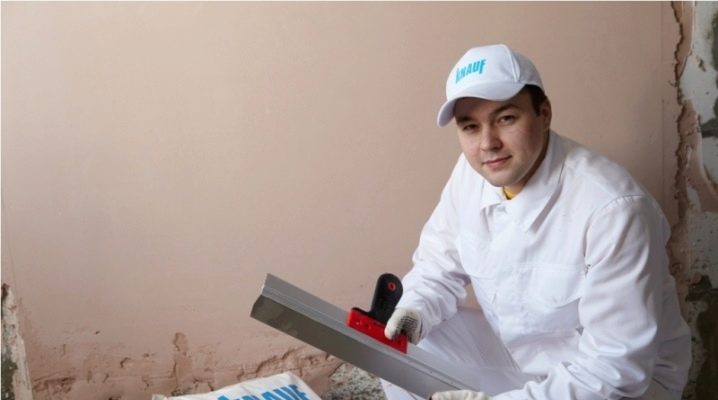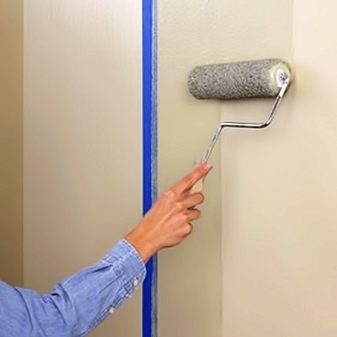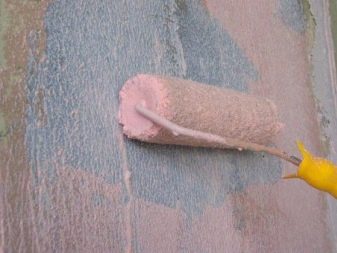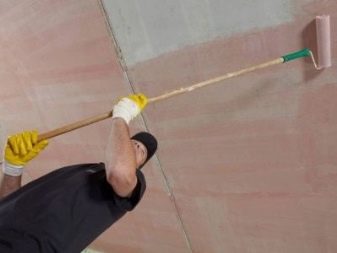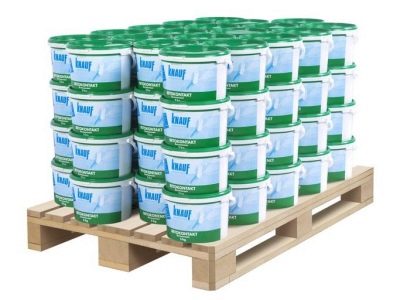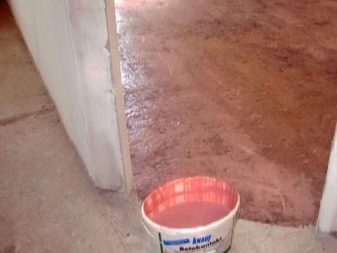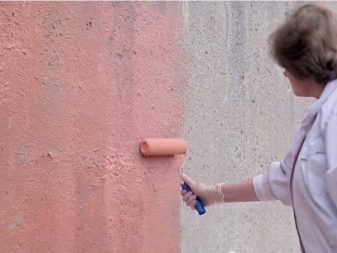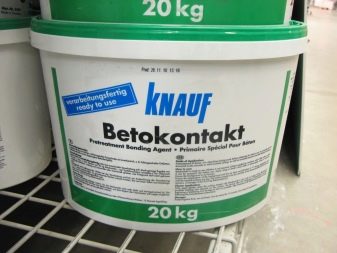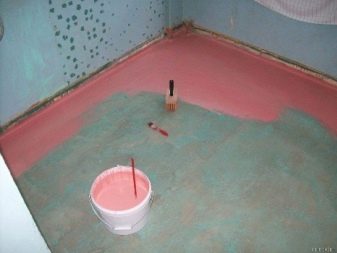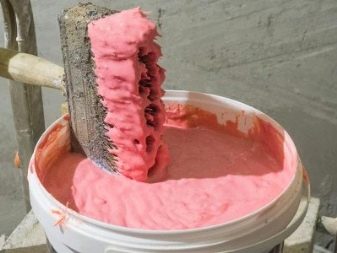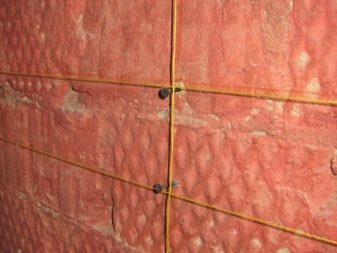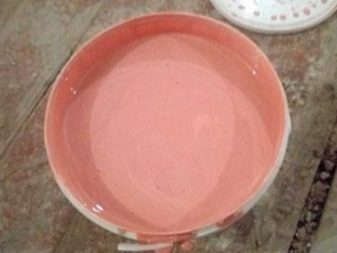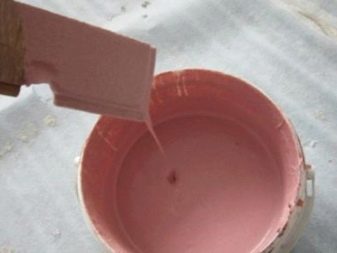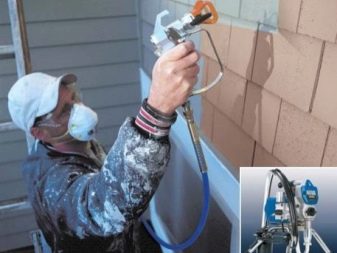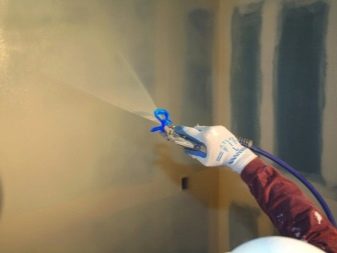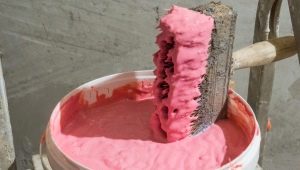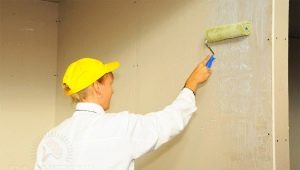Primer consumption Betonokontakt Knauf per 1 m2
Preparing walls for painting, plastering or other processing always implies maximum leveling of the base. If formally, according to the descriptions of the compositions, it turns out that they may lie on uneven surfaces, it is not worth risking again. When finishing the concrete comes primer concrete contact.
Special features
The adhesion between two different types of materials often causes serious problems in finishing. Primers, such as concrete contact, increase adhesion, even if the substrate absorbs moisture poorly. The composition of such materials include sand, cement and some special additives (they are determined by the mixture formulation). The rough outer layer created by the contact primer is formed by sand, and the cement helps it to hold better on the surface.
By production invariably used only environmentally-friendly materials that do not emit bad odors and do not spoil the appearance of the walls.
Application and characteristics
You can use the material once after shaking. It is recommended to use it to:
- to prevent the destruction of paint on dry plaster;
- facilitate plastering;
- improve the adhesion of tiles to concrete walls;
- close seams and cracks;
- reduce premature shedding of finishing materials.
The primer of the Knauf brand contains acrylic, which gives it an increased resistance to moisture. At the same time, the quality of surface preparation is not worse than that of most other auxiliary materials (and sometimes even better).
Available:
- as a universal mixture, and adapted directly to the interior;
- as a large fraction, and small.
Carefully thought over compounding and production technology allows the primer to remain intact for many decades.
After applying to the wall, it is enough to wait a few hours, and then immediately proceed to the main surface finish.
German concrete contact is painted in pink. It is designed to impregnate bases that are not able to absorb glue or leveling mixture. Polymer dispersion composition helps even in caseswhen the old finish is not dismantled, and overlaps.
Concrete is suitable for lubrication:
- tiles;
- polystyrene foam;
- drywall.
The leveling mortar put on the primer dries evenly. Thanks to pretreatment, it will be possible to reduce the amount of plaster or paint used. Concrete has antiseptic properties. It effectively suppresses the occurrence of foci of any pathological microflora. When using it, the permeability of the intermediate finishing layers increases, and because of this, ventilation of the rooms and their air exchange with the outside world is facilitated.
The material from Knauf has a neutral acid-base balance. It retains its positive characteristics and when the frost is -40 degrees, and when the heat is up to +60 degrees. Due to the absence of toxic components, Knauf concrete contact can be used even where ventilation is unsatisfactory - there will be no harm to the health of the household.
In a container of the most practical capacity (5 or 20 kg), the primer retains its characteristics for up to 1.5 years, unless the tightness is broken.
More about primer Knauf concrete contact - in the next video.
Consumption of the mixture
The consumption of high-quality concrete contact Knauf per 1 m2 is a very important and relevant issue. Professionals, and even those who have worked with similar compositions at least once, will say for sure that this indicator is determined by the type of surface, its initial state and the level of absorption of moisture.
When analyzing the construction practice (on average) the following figures were obtained:
- The consumption of bricks, sand concrete and porous concrete is 500 g per 1 sq. M. You can reduce costs by using impregnations that penetrate deep into the material.
- First-class monolithic concretes are primed in the amount of 350 g per 1 sq. M, provided that the pore size is medium.
- When there is little pore or the surface is already covered with paint, you can spend only 150-250 g of primer to cover 1 sq. M.
In order for adhesion to be fully ensured, the condition of the initial surface of the wall must be taken into account. If in the process of work gaps are detected or the base is very eagerly absorbs the finishing material, it can be covered again, but only after the final drying of the initially set mixture.
Determining how much concrete primers will have to spend is not so difficult.Its insignificant volume is weighed in a pallet and distributed over an area of 1 sq. M on walls and ceilings.
Such a test facilitates the calculation, allowing you to avoid both the purchase of unnecessary material and the sudden end of it in the midst of work.
Home masters and even experienced professionals are regularly interested in whether it is possible to deviate from the recommended numbers, use a smaller amount of concrete contact. As practice shows, this is a big mistake: the cost of buying a primer is relatively small, and its lack affects the quality of preparation. The created layer will be fragile - it can crack and stratify. The worst thing is that then you will not be able to achieve a normal level of adhesion with the main finish.
It is extremely important to take into account the peculiarities of drying of individual materials. If the sand concrete is dried in the wrong temperature conditions and does not moisten it, the wall will dry out. Then even the best primer will not be able to prevent the plaster from shedding or cracking on the paint. We'll have to redo all the work, re-invest in the purchase of finishing and preparatory materials.
The conclusion is simple: only strict compliance with the manufacturer’s instructions helps to avoid cost overruns.
At first, concrete contact can be mixed with deeply penetrating mixtures, and then it is permissible to use it only in its pure form. When using the spray gun, the total consumption of the primer grows slightly. The manufacturer recommends waiting for drying for 12 hours (this time is the maximum). If the temperature and humidity conditions are favorable, you can wait only 3-4 hours. When using hand tools, concrete contact can not be diluted with water, but if it is mechanically sprayed, the solution is made in a 2: 1 ratio.
You can find out how to prime the walls before painting with your own hands by watching the video below.
